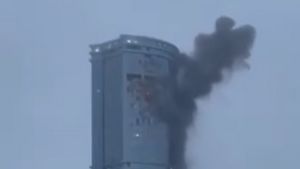JAKARTA - The mistake of workers repairing rail obstructions in connecting an automated signaling system to the network led to India's deadliest train accident in two decades, according to the results of an official investigation.
The accident that occurred on June 2 at Bahanaga Bazar Station, Odisha State, eastern India killed 288 people and injured more than 1,000 others.
This disaster occurred when a passenger train crashed into a stationary freight train, jumped off the rails, and hit another passenger train coming from the opposite direction.
In an investigative report seen by Reuters, as quoted on July 4, investigators from the Rail Safety Commission (CRS) said the first collision occurred due to modifications made to the signaling circuit, to fix a frequent problem with nearby rail obstructions.
Local railroad staff did not have a standard circuit diagram, which led to faulty connections in the signaling system when they tried to turn off the boom barrier circuit for repairs, he said. The malfunctioning system was redirecting passenger trains to freight train lines, he said.

Last month, investigators focused on repair work on the rail barrier and its possible connection to the manual bypass of the signaling system.
The investigation was launched after initial findings indicated signal failure was the main cause of the crash.
"Everyone involved at the site has been asked to join this investigation. This investigation will take time and we are looking at all possible angles," said A.M. Chowdhary, railway safety commissioner for the southeast region is leading the investigation.
Preliminary investigations show the Coromandel Express, bound south towards Chennai from Kolkata, veered off the main line and entered a loop line - the side lane used to park the trains - at 128 km/h (80 mph), and rammed into a freight train. not moving.
The accident caused the engine and the first four or five cars of the Coromandel Express to jump over the tracks, roll over, and hit the last two cars of the Yeshwantpur-Howrah train which was traveling in the opposite direction at 126 km/h on the second mainline.
SEE ALSO:
It is known that India, which has the fourth largest rail network in the world, is undergoing a transformation worth 30 billion rupees, with new trains and modern stations under the encouragement of Prime Minister Narendra Modi, to improve infrastructure and connectivity.
However, this accident raises questions about whether safety is getting enough attention.
The CRS investigation report said there had been negligence at various levels in the signaling and telecommunication department, to the point where standard operating procedures were not followed during the repair work.
The English, Chinese, Japanese, Arabic, and French versions are automatically generated by the AI. So there may still be inaccuracies in translating, please always see Indonesian as our main language. (system supported by DigitalSiber.id)


















